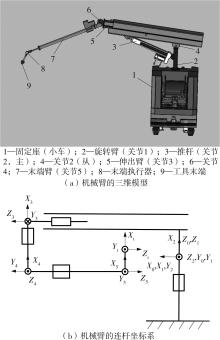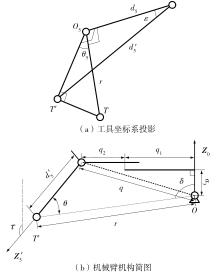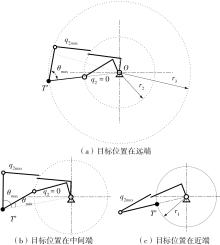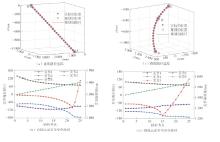| [1] |
ZHANG Tie, CHEN Yijie, ZOU Yanbiao.
Robot Collision Detection Based on Disturbance Kalman Filter External Torque Observer
[J]. Journal of South China University of Technology(Natural Science Edition), 2024, 52(3): 84-92.
|
| [2] |
JI Xiang, WANG Haihong, ZHAI Tiansong, et al..
Global Output Feedback Finite-Time Synchronization Regulation of Robot Manipulators Using Only Position Measurements
[J]. Journal of South China University of Technology(Natural Science Edition), 2023, 51(9): 56-68.
|
| [3] |
ZHAI Jingmei, LU Dongwei.
Research on Optimized Teaching Strategy and BPNN-DMPs Trajectory Learning Model of Massage Robot
[J]. Journal of South China University of Technology(Natural Science Edition), 2023, 51(12): 1-8.
|
| [4] |
CAO Xuepeng, WANG Deshuo, FENG Yanli, FAN Hao, ZHANG Gong, ZHANG Xinrong, ZHAO Ruiying.
Learning and Generalization of Dual-Robot Cooperative Handling Trajectory Based on Dynamic Movement Primitives
[J]. Journal of South China University of Technology(Natural Science Edition), 2023, 51(12): 9-20.
|
| [5] |
HUANG Haixin, WANG Zheng, CHENG Shoushan, LI Chunming.
Optimized Design of the Main Structure of a Wall-Climbing Robot for Bridge Detection Based on Negative Pressure Adsorption
[J]. Journal of South China University of Technology(Natural Science Edition), 2023, 51(12): 21-33.
|
| [6] |
YAO Daojin, YIN Xiong, LUO Zhen, et al..
AGVS Path Planning Agorithm in Complex Environments
[J]. Journal of South China University of Technology(Natural Science Edition), 2023, 51(11): 56-62.
|
| [7] |
WANG Gao, CHEN Xiaohong, LIU Ning, et al.
A Robot Grasping Policy Based on Viewpoint Selection Experience Enhancement Algorithm
[J]. Journal of South China University of Technology(Natural Science Edition), 2022, 50(9): 126-137.
|
| [8] |
ZHANG Tie, XU Jinsheng, ZOU Yanbiao .
A Force-Sensorless Dragging Teaching Method Based on Disturbance Kalman Filter for Robot
[J]. Journal of South China University of Technology(Natural Science Edition), 2022, 50(9): 116-125.
|
| [9] |
ZHANG Qin, HU Jiahui, REN Hailin.
Intelligent Pushing Method and Experiment of Feeding Assistant Robot
[J]. Journal of South China University of Technology(Natural Science Edition), 2022, 50(6): 111-120.
|
| [10] |
SHI Buhai, OU Huahai, GUO Qingda .
A Fast Teaching Method of Robot Based on Position Tracker
[J]. Journal of South China University of Technology(Natural Science Edition), 2022, 50(10): 62-69.
|
| [11] |
WEI Wu, HAN Jin, LI Yanjie, et al.
Path Planning of Mobile Robots Based on
Dual-Tree Quick-RRT* Algorithm
[J]. Journal of South China University of Technology (Natural Science Edition), 2021, 49(7): 51-58.
|
| [12] |
ZHAI Yuyi, MA Xinyuan, CHEN Dongdong, et al.
Research on Joint Motion Control of Soft Wearable Upper Limb Rehabilitation Robots
[J]. Journal of South China University of Technology(Natural Science Edition), 2021, 49(6): 19-27.
|
| [13] |
QUAN Yanming HE Yiming.
Research on Clonal Selection Algorithm for Multi-Robot Task Allocation and Scheduling
[J]. Journal of South China University of Technology (Natural Science Edition), 2021, 49(5): 102-110.
|
| [14] |
HUA Dezheng, LIU Xinhua, ZHAO Xin, et al.
Design and Experiments of Spherical Magnetic Actuated Robot
Based on Magnetorheological Fluid
[J]. Journal of South China University of Technology (Natural Science Edition), 2021, 49(2): 151-160.
|
| [15] |
ZHANG Kaisheng, ZOU Qingbiao, ZHAO Bo, et al.
Study on Flexible Biomimetic Robotic Fish Modeling and Its Cruising Speed Based on CEL
[J]. Journal of South China University of Technology (Natural Science Edition), 2020, 48(6): 34-41,57.
|







